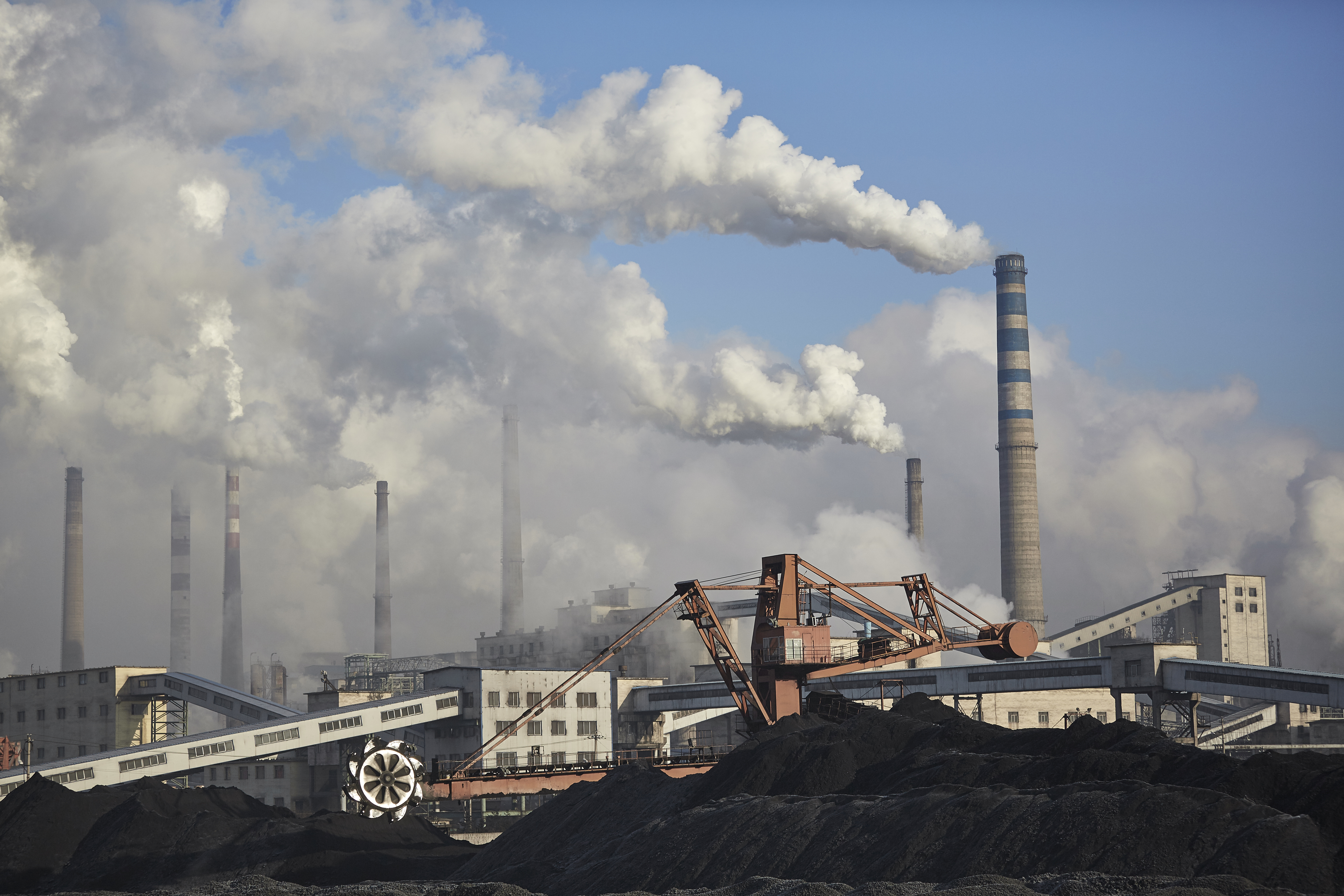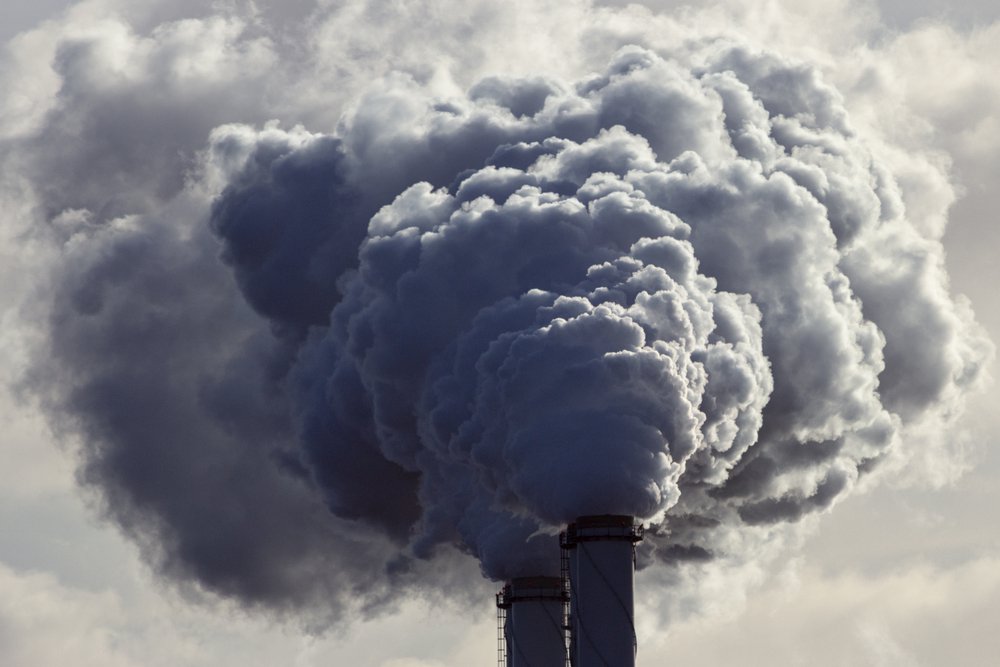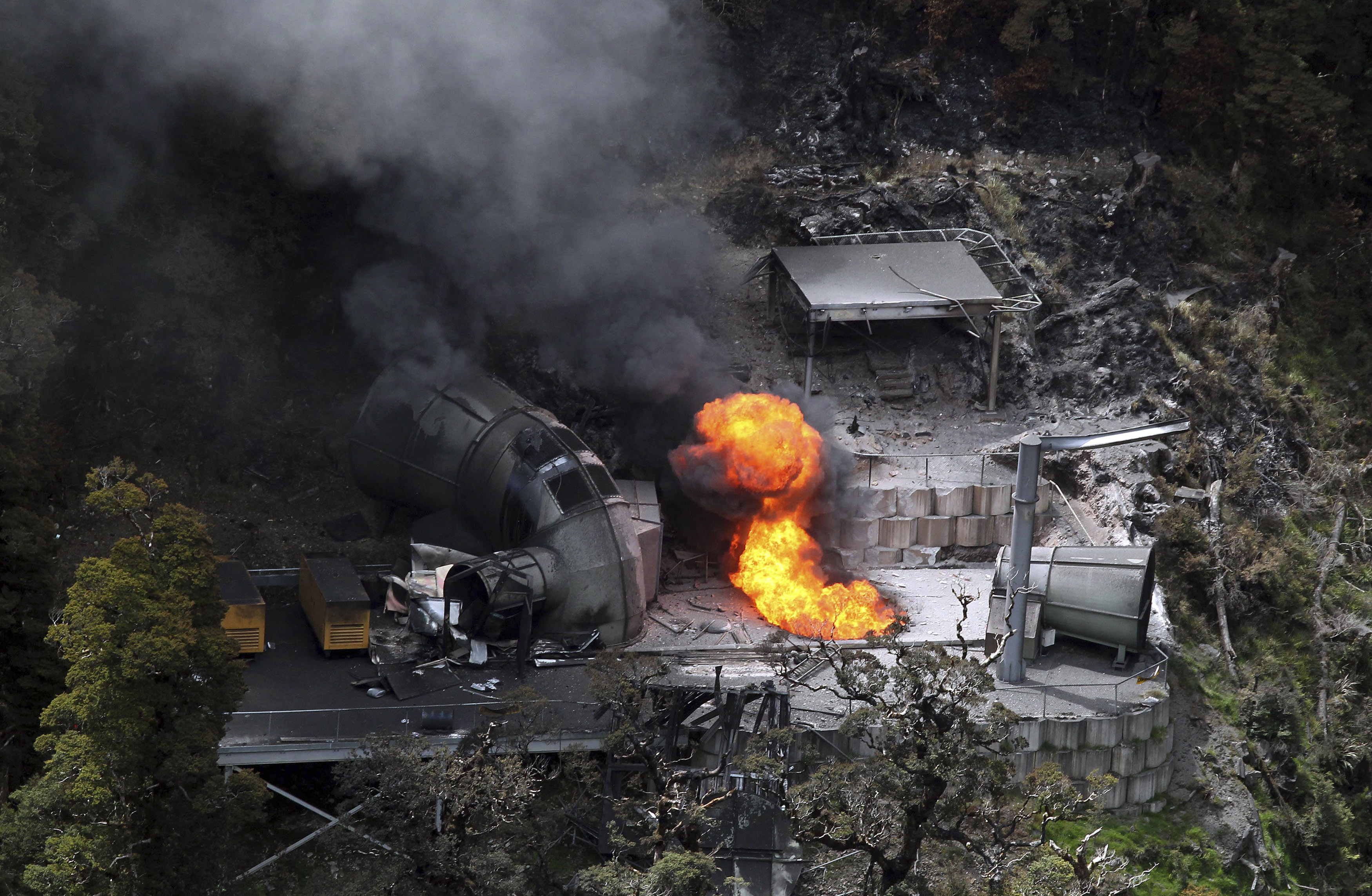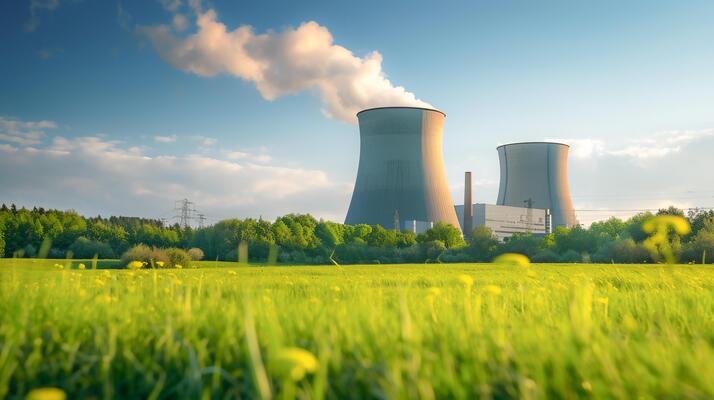Nuclear Safety
How Uranium Outshines Fossil Fuels
Key Generation Uranium News Highlights

Generation Uranium Secures Key Mining Permits

Breakthrough Technology Enhances Uranium Purity

Global Energy Leaders Invest in Uranium
September 4, 2024
The quest for reliable and sustainable energy sources is accompanied by the critical need for safety.
Energy production and consumption have profound implications for both human health and the environment.
As the global demand for energy continues to rise, so does the importance of ensuring that this energy is produced and delivered safely.
Historically, the pursuit of energy has often come with significant risks.
Coal mining, oil drilling, and natural gas extraction have all been associated with accidents, environmental damage, and health hazards.
These risks underscore the need for energy sources that can meet our needs without compromising safety.
Nuclear energy, powered by uranium, presents a compelling case for safe and efficient energy production.
With stringent safety protocols, advanced technology, and a track record of reliability, nuclear energy offers a path forward that minimizes the risks associated with traditional fossil fuels.
In this article, we will explore the safety aspects of uranium and nuclear energy, comparing them with the safety records of coal and natural gas.
By examining these differences, we can better understand why uranium outshines fossil fuels in terms of safety and sustainability.

Uranium and Nuclear Energy: Safety Measures and Protocols
Uranium plays a pivotal role in the generation of nuclear energy, which is renowned for its stringent safety measures and protocols.
From mining to power generation, the nuclear industry is governed by rigorous standards designed to protect both workers and the environment.
Uranium mining operations are subject to extensive regulations that ensure the safety of miners and the surrounding communities.
These regulations cover everything from radiation protection and waste management to water usage and land rehabilitation.
Advanced technology and monitoring systems are employed to minimize exposure to radiation and other hazards.
In nuclear power plants, safety is paramount.
Multiple layers of physical and technological barriers are implemented to prevent the release of radioactive materials.
These include robust containment structures, redundant cooling systems, and advanced control systems that can automatically shut down the reactor in case of an emergency.
The International Atomic Energy Agency (IAEA) sets global standards for nuclear safety and provides guidelines that are adopted by nuclear facilities worldwide (International Atomic Energy Agency).
Technological advancements have further enhanced the safety of nuclear power plants.
Next-generation reactors, such as Small Modular Reactors (SMRs) and Generation IV reactors, are designed with passive safety features that require minimal human intervention.
These reactors are capable of shutting down safely in the event of a malfunction without the need for external power or operator action.
Furthermore, the nuclear industry has a strong culture of safety and continuous improvement.
Lessons learned from past incidents, such as the Fukushima Daiichi accident, have led to significant enhancements in reactor design, emergency preparedness, and regulatory oversight (World Nuclear Association).
Overall, the nuclear energy sector’s commitment to safety, backed by international standards and cutting-edge technology, ensures that uranium remains a safe and reliable energy source.
Coal: The Hidden Dangers
Coal has been a cornerstone of energy production since the Industrial Revolution.
It is abundant and relatively inexpensive, fueling economic growth and industrialization worldwide.
However, the extraction and use of coal pose significant safety and environmental hazards.
Coal mining, particularly underground mining, is fraught with dangers.
Miners face risks of cave-ins, explosions, and exposure to harmful dust and gasses.
Black lung disease, caused by inhaling coal dust, has afflicted many miners, leading to severe respiratory issues and premature death (National Institute for Occupational Safety and Health).
Surface mining methods, such as strip mining and mountaintop removal, also pose environmental risks, including habitat destruction, water pollution, and soil erosion.

Coal combustion is another major source of concern.
Burning coal releases significant amounts of carbon dioxide, contributing to climate change.
It also emits sulfur dioxide, nitrogen oxides, and particulate matter, which can lead to respiratory problems, acid rain, and smog (U.S. Environmental Protection Agency).
Additionally, coal ash, a byproduct of coal combustion, contains toxic heavy metals such as arsenic, lead, and mercury.
Improper disposal of coal ash can contaminate water supplies and pose serious health risks to nearby communities.
Efforts to mitigate these risks include the implementation of advanced technologies such as carbon capture and storage (CCS) and high-efficiency, low-emission (HELE) technologies.
However, these solutions are often costly and not widely adopted.
Given these challenges, the safety and environmental impacts of coal remain significant drawbacks in its continued use as an energy source.
Natural Gas: Risks and Challenges
Natural gas has gained popularity as a cleaner alternative to coal and oil, often being touted for its lower carbon dioxide emissions.
However, this energy source is not without its risks and challenges.
The extraction process for natural gas, particularly through hydraulic fracturing (fracking), poses significant environmental and safety concerns.
Fracking involves injecting high-pressure fluid into shale rocks to release natural gas, a process that can contaminate groundwater with hazardous chemicals (U.S. Environmental Protection Agency).
Methane leaks during extraction and transportation are another major issue.
Methane is a potent greenhouse gas with a global warming potential many times greater than carbon dioxide over a 20-year period (Environmental Defense Fund).

These leaks not only contribute to climate change but also pose explosion hazards.
Natural gas infrastructure, including pipelines and storage facilities, also presents safety risks.
Pipeline explosions and leaks can cause significant damage and loss of life, as evidenced by numerous incidents over the years (Pipeline and Hazardous Materials Safety Administration).
Efforts to mitigate these risks include improving pipeline safety standards, enhancing leak detection technologies, and implementing stricter regulations on fracking and methane emissions.
Despite these efforts, the environmental and safety concerns associated with natural gas extraction and transportation remain significant challenges.
The reliance on natural gas as a "bridge fuel" in the transition to renewable energy must be carefully managed to minimize its environmental impact and ensure safety.
Comparative Analysis: Uranium vs. Coal and Gas

When evaluating energy sources based on safety, uranium, used in nuclear power plants, consistently outshines coal and natural gas.
Nuclear energy is among the safest energy sources, resulting in far fewer deaths per unit of electricity produced compared to fossil fuels.
According to Our World in Data, nuclear energy results in significantly fewer deaths than coal and natural gas. The death rates from air pollution and accidents per terawatt-hour (TWh) of electricity generated are as follows:
Coal: 24.6 deaths per TWh
Oil: 18.4 deaths per TWh
Gas: 2.8 deaths per TWh
Nuclear: 0.07 deaths per TWh
These statistics highlight the stark difference in safety between these energy sources.
Coal is the most dangerous, with a high incidence of fatalities due to mining accidents, respiratory diseases from coal dust, and pollution-related health issues.
Natural gas, while safer than coal, still poses significant risks due to methane leaks, which are highly explosive and have a substantial global warming potential.
In contrast, nuclear power's stringent safety protocols and advanced technology significantly mitigate risks.
Even high-profile incidents like Chernobyl and Fukushima, while severe, are relatively rare and have led to comprehensive safety enhancements in the industry.
Nuclear power plants are designed with multiple layers of safety, including robust containment structures, redundant cooling systems, and advanced control mechanisms to prevent and respond to emergencies.
The industry's commitment to continuous improvement and adherence to international safety standards ensures that nuclear power remains a reliable and safe energy source.
In summary, the comparative analysis clearly shows that nuclear energy, powered by uranium, is safer than both coal and natural gas.
The lower death rates and stringent safety measures make it a compelling choice for meeting future energy needs while minimizing risks to human health and the environment.

The Future of Safe Energy: Embracing Uranium
The global energy landscape is undergoing a significant transformation driven by the urgent need to reduce carbon emissions and combat climate change.
As we look to the future, ensuring that energy production is not only efficient but also safe is paramount.
Nuclear energy, powered by uranium, is poised to play a crucial role in this transition. With its low operational emissions and robust safety protocols, nuclear energy stands out as a key player in the move towards a more sustainable and safe energy future.
Advancements in nuclear technology are making uranium-based energy even safer. Next-generation reactors, such as Small Modular Reactors (SMRs) and Generation IV reactors, incorporate passive safety features that can automatically shut down the reactor in the event of an emergency without the need for human intervention or external power.
These innovations significantly reduce the risk of accidents and enhance the overall safety of nuclear power plants (World Nuclear Association).
Government policies and international regulations are also crucial in ensuring the safety of nuclear energy.
The International Atomic Energy Agency (IAEA) sets global safety standards and provides guidelines that are adopted by nuclear facilities worldwide.
These standards cover all aspects of nuclear safety, from the design and construction of reactors to their operation and decommissioning.
Moreover, public perception and acceptance of nuclear energy are improving as awareness of its safety and environmental benefits grows.
Educational initiatives and transparent communication about the safety measures in place are helping to build public trust in nuclear energy.
Investment in nuclear energy is increasing as governments and private sectors recognize its potential in achieving energy security and sustainability goals.
Countries like Canada, France, and China are expanding their nuclear programs, highlighting the global shift towards embracing uranium as a safe and reliable energy source (Our World in Data).
The integration of renewable energy sources with nuclear power also presents a promising path forward.
By combining the reliability of nuclear power with the intermittent nature of renewables like wind and solar, we can create a balanced and resilient energy system that ensures a steady supply of clean energy.
The future of safe energy lies in embracing uranium and the advancements in nuclear technology.
As we transition to a greener energy landscape, the safety and sustainability of nuclear power make it a compelling choice for meeting our energy needs while protecting human health and the environment.
Conclusion: The Case for Uranium
As we navigate the complexities of the global energy landscape, it becomes clear that efficiency and safety are paramount.
Uranium, utilized in nuclear power, emerges as a standout energy source for several compelling reasons.
First, the energy density of uranium is unparalleled.
A small amount of uranium fuel can produce vast amounts of energy, far surpassing the output of coal and natural gas.
This high efficiency translates into lower fuel consumption and reduced environmental impact.
Second, nuclear power generates minimal greenhouse gas emissions during operation.

Unlike coal and gas plants, which emit significant quantities of carbon dioxide and other pollutants, nuclear power plants offer a cleaner alternative that aligns with global efforts to combat climate change.
Third, advancements in nuclear technology are addressing historical concerns about safety and waste management.
Innovations such as small modular reactors (SMRs) and improved waste storage solutions are making nuclear power safer and more sustainable.
Furthermore, the long operational lifespan of nuclear plants and stable fuel costs make them economically viable in the long term.
While the initial capital investment is high, the benefits of sustained, low-cost energy production outweigh the upfront costs.
In the race towards a sustainable energy future, uranium stands out as a key player.
Its high efficiency, low emissions, and technological advancements position it as a superior choice over traditional fossil fuels.
For investors, uranium represents a compelling opportunity to support the transition to cleaner energy and achieve long-term returns.
Generation Uranium is at the forefront of this transition, offering a unique investment opportunity in a sector poised for growth.
Join us in generating the power of tomorrow.
Subscribe for the Latest Generation Uranium Investor Updates
Subscribe for the Latest on
Generation Uranium's Advancements
Office: 6th Floor,
905 W Pender St,
Vancouver, BC
V6C 1L6
Email: [email protected]

